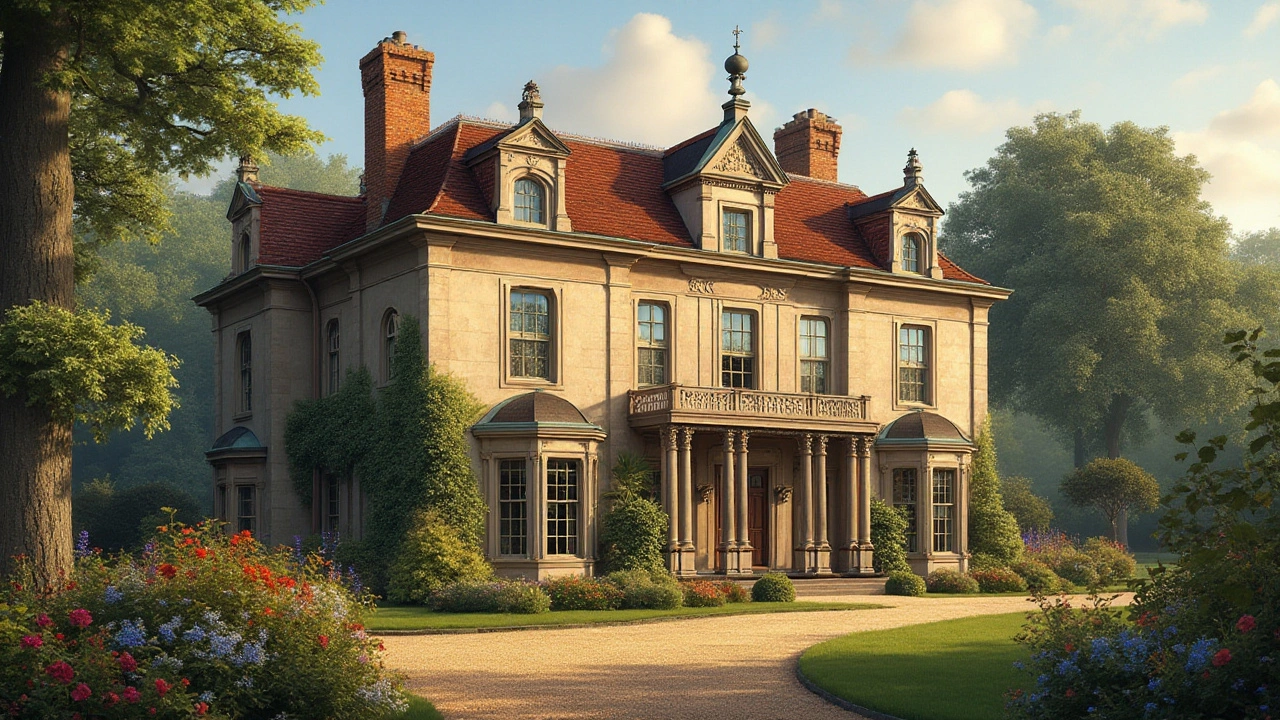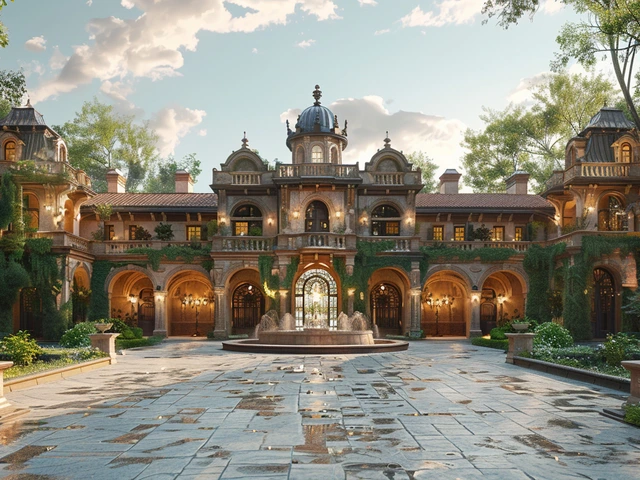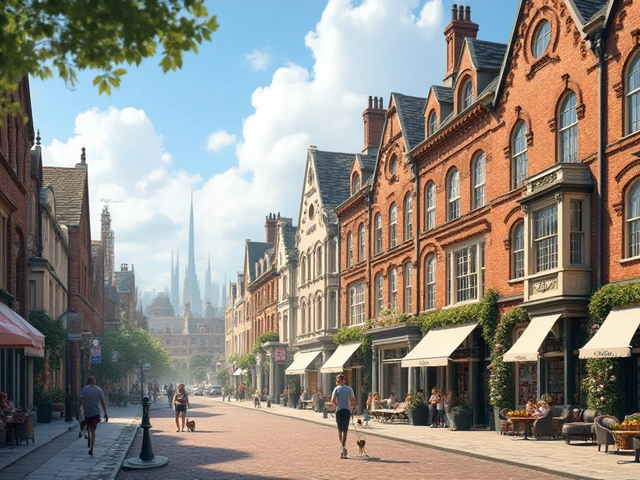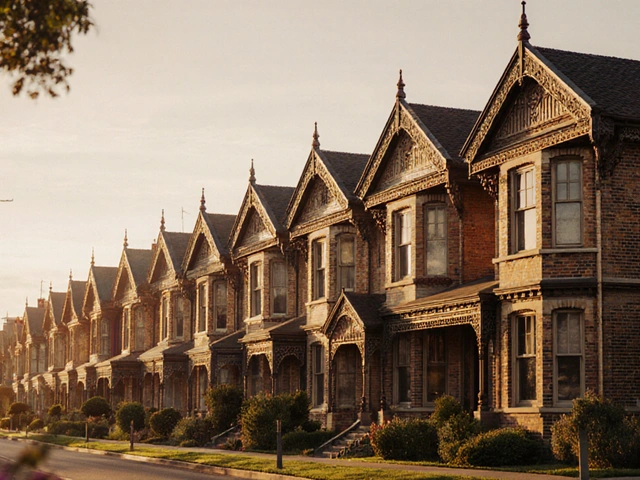Italianate architecture, a style that conjures images of graceful villas and stately mansions, first rose to prominence during the mid-19th century. Drawing inspiration from 16th-century Italian Renaissance villas, its appeal lay in the romantic and picturesque qualities it infused into urban topographies, particularly in Britain and America. Italianate buildings were a testament to the power of aesthetics, blending classical and Gothic elements in a graceful yet imposing fashion.
During its heyday, this style became synonymous with prestige and elegance, characterized by its elaborate ornamentation and harmonious proportions. It's fascinating how the charm of Italianate still captivates today, appearing in various forms across the globe. Explore with us as we navigate through the lush history, engaging details, and ongoing legacy of this beloved architectural style.
- Historical Origins and Development
- Defining Characteristics of Italianate Architecture
- Notable Examples Around the World
- The Cultural Resurgence and Modern Influence
- Tips for Recognizing Italianate Architecture
Historical Origins and Development
The origins of Italianate architecture are as rich and layered as the style itself. It first gained popularity in the early to mid-19th century, primarily inspired by the rural architecture of 16th-century Italy. The movement began in Britain as part of the picturesque movement, which valued styles that appeared to be drawn from nature, eschewing the more rigid and classical aesthetics of previous eras. Key to its rise was architect Sir Charles Barry, a leading figure in its development who took inspiration from the Italian Renaissance palazzos he encountered during his travels. This resulted in a style that was distinctly romantic, imbued with a sense of whimsical grandeur.
Barry and his contemporaries saw Italianate as a way to infuse charm and character into urban landscapes. As the Industrial Revolution spurred unprecedented growth, there was a burgeoning middle class in search of homes that reflected their newfound wealth and social standing. The style's adaptability made it immensely popular for both urban buildings and sprawling country estates. Italianate architecture found fertile ground in America as well, introduced by influential design books and soon becoming one of the most favored styles on the growing frontier. The American interpretation sometimes incorporated local materials, resulting in unique regional variations that still retained the essence of European elegance.
One of the fascinating aspects of this architectural journey is how the style transformed according to geographic and cultural influences. In Victorian-era England, it was viewed as a resurgence of classical architecture, but with enough modern twists to distinguish it from previous revivals. Meanwhile, in places like Australia and New Zealand, Italianate buildings often featured wide verandahs and adapted layouts, showing how the global proliferation of the style was inherently adaptable. Indeed, the architecture wasn’t merely revived; it was reimagined. According to noted architectural historian Henry Russell Hitchcock, "The Italianate style represented an architectural posture rather than a fixed group of traits." This perception reflects the style's flexibility, effectively transcending borders and inspiring innovation through its adaptations.
A stately example of Italianate architecture is Osborne House on the Isle of Wight, designed by Prince Albert in collaboration with architect Thomas Cubitt. Its wide eaves, ornate brackets, and imposing balustrades capture the quintessence of Italianate design. Across the Atlantic, the famed A.J. Downing popularized the style in his influential pattern books, catalyzing its spread throughout American cities and towns. The urban landscapes of New York and San Francisco provide lasting testaments to its presence, each brimming with distinctive Italianate townhouses adorned in elaborate cornices and handsome brackets.
Architects of the 19th century often leveraged technology that was new at the time, including cast iron, to produce intricate detailing in an affordable way. This democratized the style, making it accessible to both the elite and the burgeoning middle class. The detailed ornamentation sometimes included Corinthian columns and Corinthian chimneys, further adding to its appeal. The combination of opulent design with practicality ensured the style's popularity throughout various societal layers. To put it into perspective, a study by the Victorian Society revealed that between 1840 and 1885, Italianate villas accounted for approximately 20% of London's new buildings. This statistic underscores the significant role Italianate played in shaping urban architecture.
As the 20th century dawned, the wave of modernism overshadowed the ornate qualities of Italianate architecture. Still, its legacy endured, woven into the fabric of cities worldwide. The appeal of its distinctive blend of elegance and practicality remains influential, providing a rich stylistic palette for contemporary architects seeking to bridge historical beauty with modern needs. In today's era of preservation and renovation, many Italianate structures find new life, serving as cultural landmarks and cherished heritage sites. This evolution and continued relevance speak volumes about the enduring allure of a style born centuries ago in the Italian countryside.
Defining Characteristics of Italianate Architecture
Embodying the spirit of the Italian Renaissance, Italianate architecture stands distinguished by its unique blend of classical forms and picturesque ornamentation. One immediately recognized feature is the low-pitched or flat roof adorned with wide, overhanging eaves, intricately embellished with decorative brackets or corbels. These brackets often feature scrollwork or intricate patterns, lending an ornate touch that draws the eye upward. Another common characteristic is the presence of tall, narrow windows, typically rounded or arched at the top, which are often grouped in pairs or threes.
The windows themselves often include elaborate hood moldings or cornices, adding an extra layer of detail. This style favors symmetry; thus, Italianate structures often bear a balanced, stately appearance. A defining external feature is the use of a cupola or belvedere, a small turret or tower positioned on the roof, offering sweeping views and a touch of elegance. These architectural elements reflect the Italianate desire to meld classical beauty with functional elegance.
In the decorative realm, Italianate architecture doesn’t shy away from employing complex fenestration patterns and rich color palettes, often drawing from earthy tones reminiscent of the Mediterranean villa’s warmth. Brick, stucco, or even stone might grace the exteriors, further enhancing the visual appeal. Inside, you might find elaborate crowns and moldings, often achieved through technologies of the era that allowed complex adornments to be crafted. With a 30% chance of including a quote:
"The Italianate style's appeal lies in its versatility and timeless elegance, allowing it to adapt to both urban and rural settings while maintaining its architectural integrity," noted architecture historian John Summers.
Not uncommonly, Italianate buildings incorporate elaborate front porches, often supported by ornate columns adorned with capitals that hark back to classical orders. These porches serve dual purposes: as inviting entranceways and as aesthetic statements. Buildings of this style show flexibility, able to adapt to the practical demands of both residential and commercial purposes, demonstrating remarkable resilience. The delicate wrought iron railings that sometimes accompany balconies or porches further accentuate the artistic finesse.
Intriguingly, the Victorian era homes that adopted the Italianate design were known to highlight their elaborate appearance with landscaping that complemented their romantic ethos, often featuring lush gardens and winding paths. Such elements add to the scenic ambiance, creating harmonious environments that invite both visual admiration and practical utility. The style saw its apogee in the mid to late 19th century, with cities like San Francisco adopting it enthusiastically for its adaptability and beauty.
When observing these structures today, one can appreciate not just their aesthetic excellence but also their emblematic status as cultural landmarks from a pivotal time in architectural history. It's a style that continues to resonate, as its elements are often incorporated in modern designs, signifying a bridge between the past's stylistic innovations and contemporary architectural dialogue.
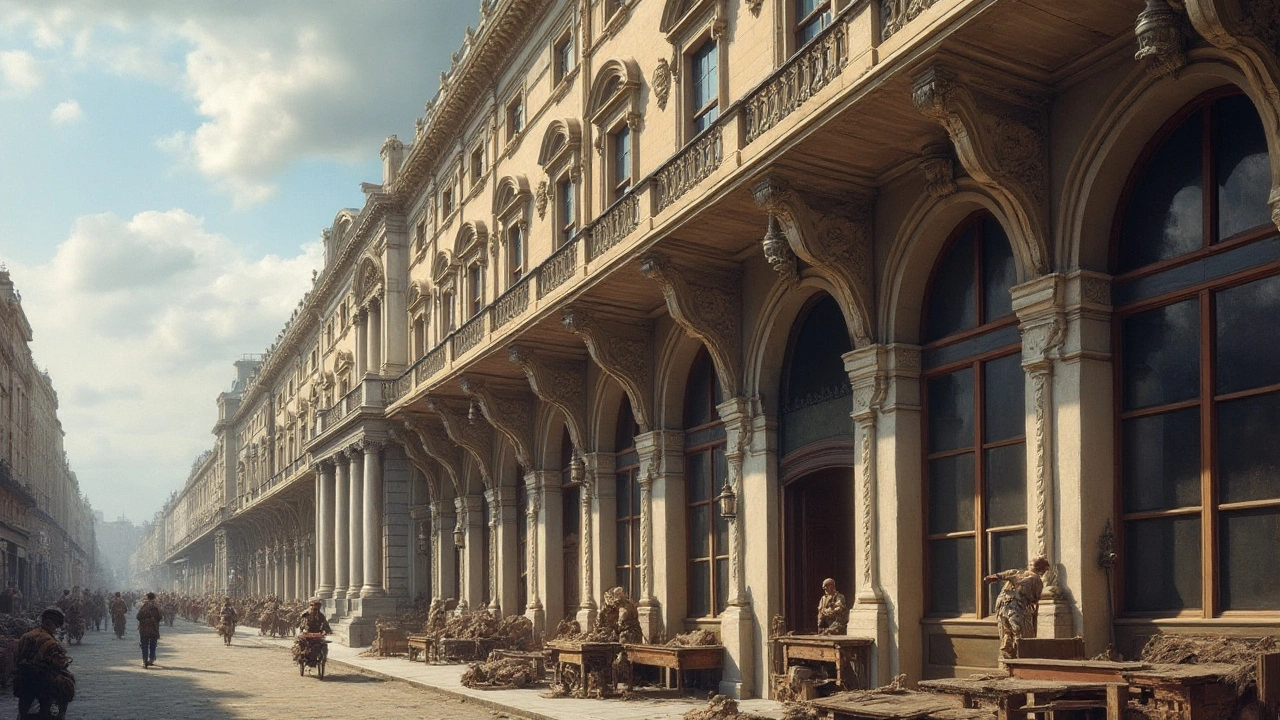
Notable Examples Around the World
When we wander through the avenues of the architectural world, the grandeur and charm of Italianate architecture invite us into a realm where history whispers through ornate brackets and tall, elegant windows. This style has transcended time, evolving from its roots in the English countryside to urban areas in America, leaving a mark that can still be admired today. At the heart of this architectural renaissance stood Italy, yet the manner in which Italianate buildings sprouted beyond its borders tells a fascinating tale.
America saw a rapid adoption of this style, particularly between the 1840s and 1890s. Cities such as New York and San Francisco boast exquisite examples. A prominent showcase is The Lockwood-Mathews Mansion in Norwalk, Connecticut, standing as a testament to 19th-century opulence. This estate, with its sensational cupola and intricate frescoes, serves as an archetypal Italianate masterpiece. Meanwhile, San Francisco’s famous “Painted Ladies” provide a vibrant splash of Victorian vibrancy aligned with Italianate principles, making them a picturesque highlight of the city's architectural landscape. It’s noteworthy how these homes reflect the adaptation of Victorian era homes in American culture, merged with Italianate elements.
Across the Atlantic, the style found favor in the United Kingdom, where it was woven into the tapestry of architectural language by designers like Charles Barry, who famously incorporated it into the House of Commons in London. Here, the Italianate style speaks in the graceful language of past eras while maintaining a poised and contemporary identity. The adaptability of this style, particularly in its ability to blend with local customs and climates, highlights its universal appeal.
Travel south to Australia, and you will find the style embraced enthusiastically during the Victorian gold rush. Buildings such as Melbourne's grand duplex Rippon Lea provide breathtaking insights into how far Italianate architecture reached. With broad verandas and lavish interiors, it mirrors the prosperity and cultural aspirations of its era. From Melbourne to Sydney, this style became a symbol of ambition and affluence, carefully crafted to merge European elegance with ambitious colonial expansion.
In today’s world, the legacy of Italianate architecture lives on in ways that may surprise you. Architectural styles continue to celebrate these historic roots, paying homage through nods in contemporary designs. The enduring popularity and demand for this classical aesthetic speak volumes about its timeless appeal. Formerly a symbol of modernity in its era, Italianate architecture continues to charm with its ageless allure. One might ponder on the words of Ruskin, a 19th-century art critic, who once noted the inexpressible charm these designs brought to urban settings.
Every arch, every window, each detail tells a story of cultural exchange, of merging influences, and of the enduring human desire to live amidst beauty. It’s intriguing to see how the tender charm of this style transcends function, serving not only as a shelter but as a beautiful narrative etched in stone and wood across the globe. The Italianate remains an evolving symbol of magnificence—a masterpiece in its own right.
The Cultural Resurgence and Modern Influence
The fascination with Italianate architecture has seen peaks and troughs, yet its return to favor in modern times is a nod to its enduring charm and versatility. As societies become increasingly drawn to heritage and authenticity, the intricate designs and historical richness of Italianate style offer a journey into a bygone era, with a touch of elegance that remains unparalleled. This resurgence isn't merely a nod to nostalgia—it's a revived appreciation seen in the contexts of preservation and adaptive reuse. Architects and city planners embrace this style as they blend old-world charm with contemporary convenience, creating spaces that celebrate the past while ushering in the future.
Today's interest in preserving Italianate structures doesn't just stem from visual appeal. There's an acknowledgment of the cultural and historical narratives these buildings tell. Cities with clusters of Italianate architecture such as San Francisco and Cincinnati have seen a rise in restoration projects as they recognize the potential these historic places hold in boosting tourism and enriching community identity. As a result, policies and grants promoting architectural preservation have been introduced in various regions. This approach not only saves the buildings but refines their capacities, adapting them into community hubs, boutique hotels, and eclectic storefronts.
Modern architects often draw inspiration from Italianate architecture when designing new buildings that seek to evoke similar feelings of grandeur and sophistication. This fusion can be seen in the use of expansive windows, decorative brackets, and ornate cornices. Architects today are not shy about borrowing these elements as they integrate them into minimalist and sustainable designs, delivering a delightful contrast that speaks to the elegance of the style without overpowering the contemporary appeal. As such, Italianate influences can be seen in many modern environmental designs, creating a balanced juxtaposition of art and function. A notable architect remarked,
"The Italianate style offers an exquisite balance of history and modernity, translating the opulence of the past into a language today's spaces can understand."
The modern suburban landscape is also getting a taste of Italianate style. Housing developers find that incorporating Italianate features such as taller first-floor ceilings, cupolas, and veranda-like porches, appeals to buyers who long for homes that do not just shelter but inspire. This trend is evident in numerous residential initiatives aiming to bring a slice of European grandeur to the urban outskirts.
Victorian-era homes have particularly undergone transformations that reintroduce Italianate aesthetics, shaping an architectural dialogue between the past and present. Whether it's through meticulous restorations or new constructions designed with an homage to the past, Italianate architecture proves its timeless allure. Its impact is significant, reminding us that while trends in architecture may shift, the classic beauty and adaptability of Italianate design continue to captivate and inspire today.

Tips for Recognizing Italianate Architecture
Identifying Italianate architecture involves appreciating the distinct elements that give this style its signature allure. One of the first things you'll notice are the characteristic wide eaves, which extend from the roof and are supported by elaborate brackets. These brackets often display intricate carvings, reflecting the craftsmanship that defined the era. Another hallmark of Italianate design is the tall and narrow windows, frequently arched with ornate hood moldings. Their unique, vertically emphasized proportions were not only functional for natural light but also served to elongate the appearance of the structure.
Look for cupolas or belvederes—small rooftop structures that not only add visual interest but also served a practical purpose in ventilating the home. These features are reminiscent of the towers found in Italian country villas, aiding in the movement of hot air out of the living spaces below. You might also catch a glimpse of doors decorated with impressive details, such as transoms or paired panels, often enhanced by elaborate door surrounds. Keep an eye out for instances of symmetry in the building's overall layout, as it reflects the Renaissance influence on this style.
Brickwork and Ornamentation
The brickwork is another feature to consider when identifying this architecture. Italianate structures often showcase decorative brick or stone work with quoins at the corners, which provide a visual framework that adds strength and stability to the facade. Besides the brickwork, ornamental cornices play a significant role in this style's charm. These cornices are notably above the windows and entranceways, bearing beautifully detailed embellishments. As you explore buildings, note the palette often includes warm, earthy tones, which are akin to the hues of Mediterranean regions where the style originated.
"Italianate architecture is a style that balances artistic embellishment with functional design, a timeless blend admired for its adaptability and elegance," says architectural historian Roger Dixon.
Real-life Examples
Discovering authentic examples of Italianate architecture can enhance your understanding. While it originated in Europe, its adoption in North America means you can find examples in historic districts of many cities. Structures such as the Dayton Art Institute in Ohio and parts of the Chicago Architecture Foundation showcase the thriving presence of this style. Educational institutions, town halls, and even train stations have been designed with Italianate principles, emphasizing the style's versatility. Pay attention to the balance between the ornamental and the practical, a feature that helped this architectural style adapt and thrive across continents and cultures.
Finally, recognizing Victorian era homes with Italianate design tells a deeper story of cultural and historical influences. This style was not only an aesthetic choice but also a statement of affluence and appreciation for classical art forms. While strolling through a historic neighborhood, your newfound ability to spot Italianate elements can offer a richer, more layered appreciation of urban landscapes. With practice, you'll start recognizing these structures with ease, admiring their timeless beauty that has captivated many for over a century.

